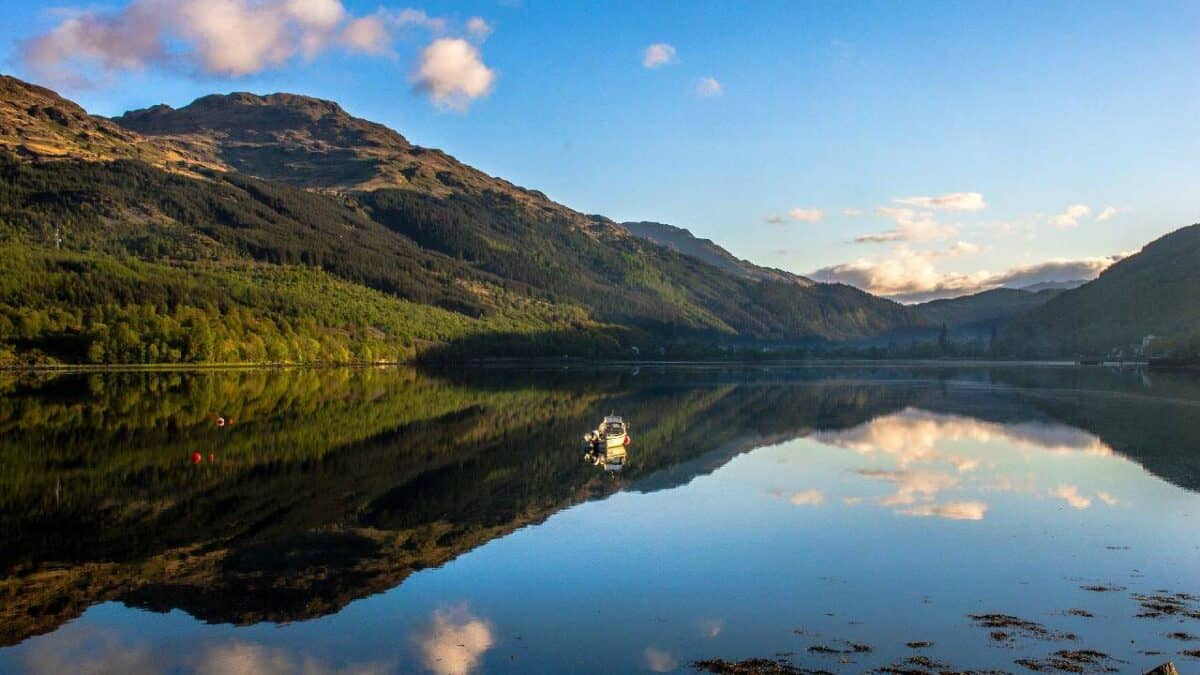Due to the breathtaking scenery, Loch Lomond is one of the best places for wild camping in Scotland. However, there are some legal restrictions while wild camping at Loch Lomond.
Loch Lomond is one of the country’s biggest national nature reserves, the Loch Lomond and The Trossachs National Park. It is an ideal camping location for an unforgettable Scottish break and a perfect base for hiking, cycling, watersport, and adventure. And even though it feels like it’s a whole world away from civilization, Loch Lomond isn’t that far away from Edinburgh or Glasgow – getting to it from these cities isn’t particularly difficult and can take less than an hour.
Map of Wild Camping Areas in Loch Lomond
Click on the map icons for more information about each wild camping area. Red icons mark wild camping areas while the blue ones mark designated campsites.
What is Wild Camping?
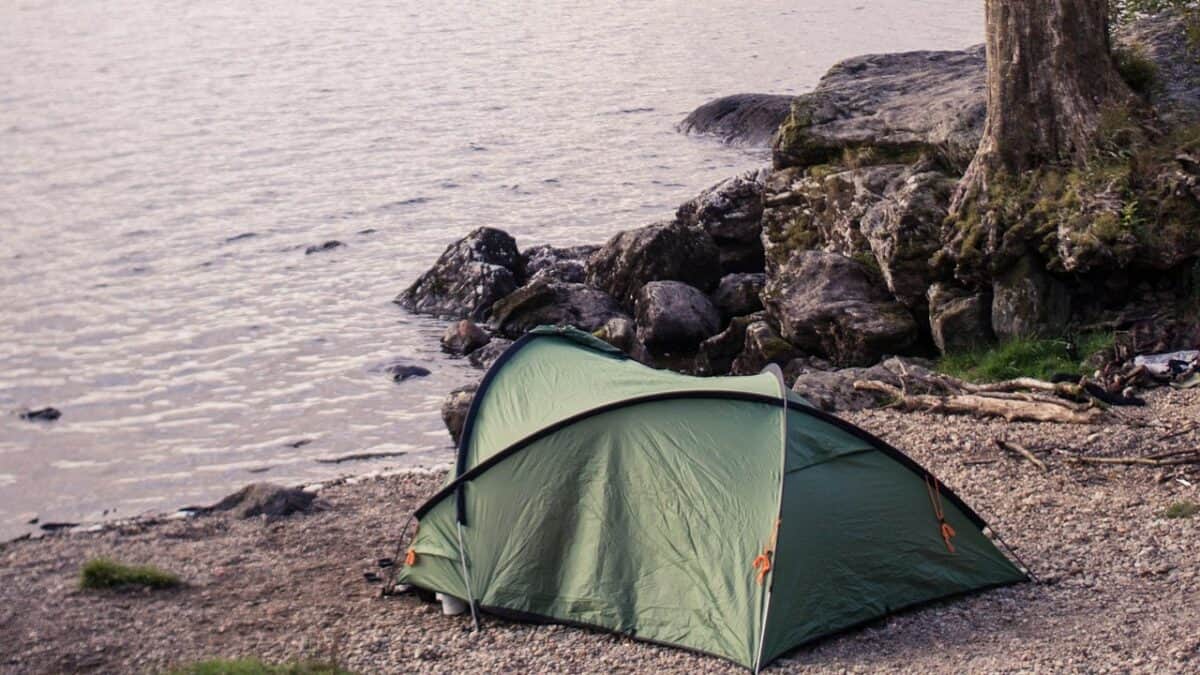
Wild camping is defined as camping outside of designated campgrounds. In Scotland, you can wild camp in tents or in a campervan. Wild camping means there are no amenities, showers, or toilets.
Generally, wild camping in Scotland is completely legal. However, to be able to wild camp in some areas around Loch Lomond, you need to obtain a special permit. These areas are well marked and part of the camping management zone.
As you can already guess, the fact that you need a permit to wild camp around Loch Lomond is the result of too many folks engaging in this activity and damaging and littering the area while doing so.
Due to this disrespect towards the environment, the restrictions have been tightened and outdoor enthusiasts cannot enjoy Loch Lomond’s natural beauty for free anymore. Fortunately, however, the permit mentioned above can be obtained at a genuinely reasonable price (more on that later).
There are certain guidelines that all backcountry explorers have to follow when engaging in dispersed camping. These regulations exist so that everyone can enjoy Scotland’s natural landscape and they all relate to one primary point – leaving no trace and respecting the environment.
Wild Camping Guidelines
When one is searching for a good spot to park the RV or pitch a tent for the night, one cannot do so just anywhere he or she pleases. Imagine waking up in the morning and seeing that a group of campers has pitched up a tent in your back garden – you wouldn’t want that to happen, would you?
The rules that all those interested in wild camping around Loch Lomond – and everywhere else in Scotland – should follow are:
- Stay at least 200 meters away from any residences. When choosing a spot for your tent, try to choose one that’s out of other people’s sight.
- Obviously, this spot should also be some distance away from paths and roads that people walk regularly.
- Never pitch up right next to an established campground, as doing such a thing is often seen as rude. If you really want to stay close to a campsite – but not in it – pitch up out of sight of the campsite.
- Instead of a wood-fired cooker, use a gas stove. By doing so, you won’t be disturbing the landscape – it’s a nice way of preventing oneself from unnecessarily overusing natural materials.
- Always arrive before sunset and leave before dawn. Never stay too long in one location.
- Finally, leave the wild camping spot in the same state you found it. The only evidence that you’ve been there should be your footsteps, and nothing else (apart from some good memories, of course).
Why Should I Wild Camp at Loch Lomond?
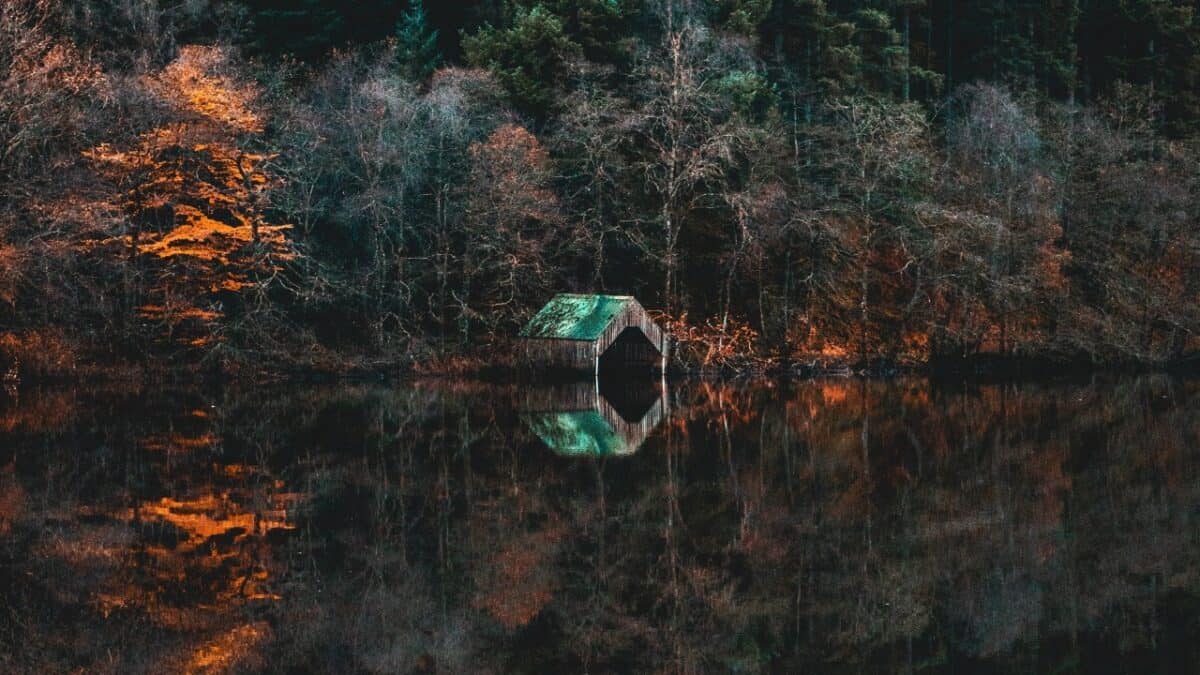
While wild camping certainly isn’t everybody’s first choice of accommodation, it is, as far as I’m concerned, the best way to experience Scotland’s breathtaking landscapes.
As you probably already know, this country’s topography becomes more and more remote the further north you travel. The result of this is obvious – finding accommodation becomes much more difficult, as well as pricier.
The most liberating (as well as cheapest!) way to explore the UK’s northernmost country is with a sleeping bag and a tent. These simple but incredibly functional and practical items provide outdoor enthusiasts with all the freedom they need when it comes to choosing where to stay for the night.
They allow one to enjoy the remoteness of wild camping far away from civilization, which, admittedly, is not something everyone likes – some folks just can’t imagine exploring a new region without the luxuries of a paid campsite, such as electricity and hot showers.
If you can’t decide whether you should wild camp or just stay at established campgrounds, consider balancing both camping styles throughout the duration of your stay at Loch Lomond.
By doing so, you’ll be able to use the aforementioned amenities from time to time while still keeping the costs down. I should also point out that, by choosing to occasionally stay at developed campsites, you will also be supporting the local economy, and that’s never a bad thing.
Is Wild Camping Permitted at Loch Lomond?
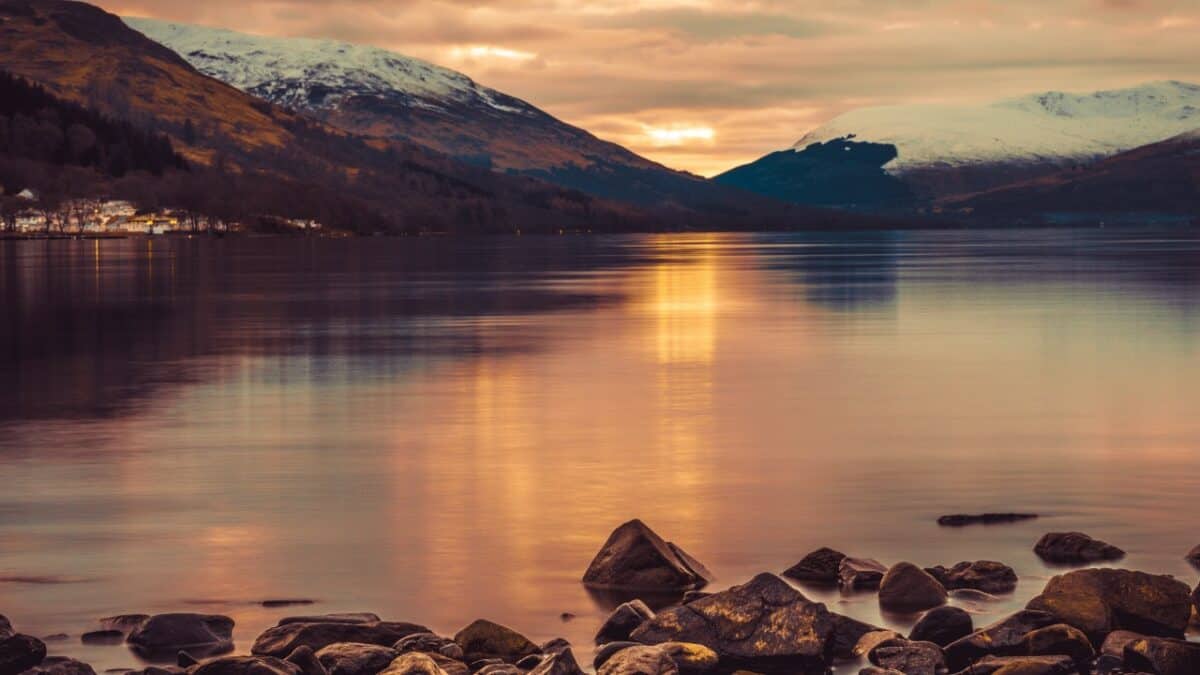
Unfortunately, there is no clear-cut answer to this question – it depends upon the time of the year.
As I mentioned above, the immense popularity of Loch Lomond has forced the local authorities to come up with bye-laws that now forbid unregistered dispersed camping at certain times of the year.
Don’t get me wrong – folks can still engage in wild camping around Loch Lomond all year long. It’s just that you’ll need to obtain a special permit in order to be able to pitch your tent at a specific spot in the Loch Lomond area between early spring and late summer.
This permit is very easy to obtain and comes at an affordable price of just £3 per tent.
In my opinion, it is completely fair that the local authorities now require campers to get these permits to be able to camp in this region during the busy season.
Since you’ll have to provide your contact details while obtaining the permit, this whole system ensures that the camping spots will be well-looked after. It also prevents the occurrence of too many outdoor enthusiasts concentrating in the same area at the same time.
When Will I Need This Permit?
Special permits for dispersed camping on Loch Lomond’s shores are required between early spring and late summer, i.e. between March and September.
The permit system was introduced by the local authorities in order to prevent unrestricted camping – as well as overcrowding – on the shores of this beautiful Scottish loch. They also ensure the protection of the park’s natural beauty.
Where Will I Need This Permit?
The aforementioned permit is required for camping in some areas along Loch Lomond’s shores. In the Trossachs National Park, there are some smaller lochs for which you will also need to have this permit in order to be able to camp next to them.
Each of these areas has a specific number of allocated permits, and they are collectively known as the Camping Management Zones.
Visit the website of the National Park to see the precise locations of these zones.
How Do I Get This Permit?
Applying for a permit that will allow you to wild camp in the Camping Management Zones of Loch Lomond is simple and easy.
All that one needs to do is to visit the website linked above and book the permit by selecting the size of their party and the duration of their stay.
Loch Lomond Wild Camping – Important Things to Know
Before you head over to Loch Lomond and The Trossachs National Park for your wild camping adventure, check out the following rules that you’ll need to abide by during your stay in the park’s Camping Management Zones:
- It’s very important that you leave your camping spot in the same state you found it in. Campers who violate the environment’s natural beauty will be fined upon their exit.
- On your first day, you should arrive at about 1 PM, and on your last day, you must leave by 11 PM.
- The aforementioned Camping Management Zones permit can be booked up to eight weeks in advance.
- You cannot wild camp in one spot for more than three nights at a time.
The Best Months to Wild Camp in Loch Lomond
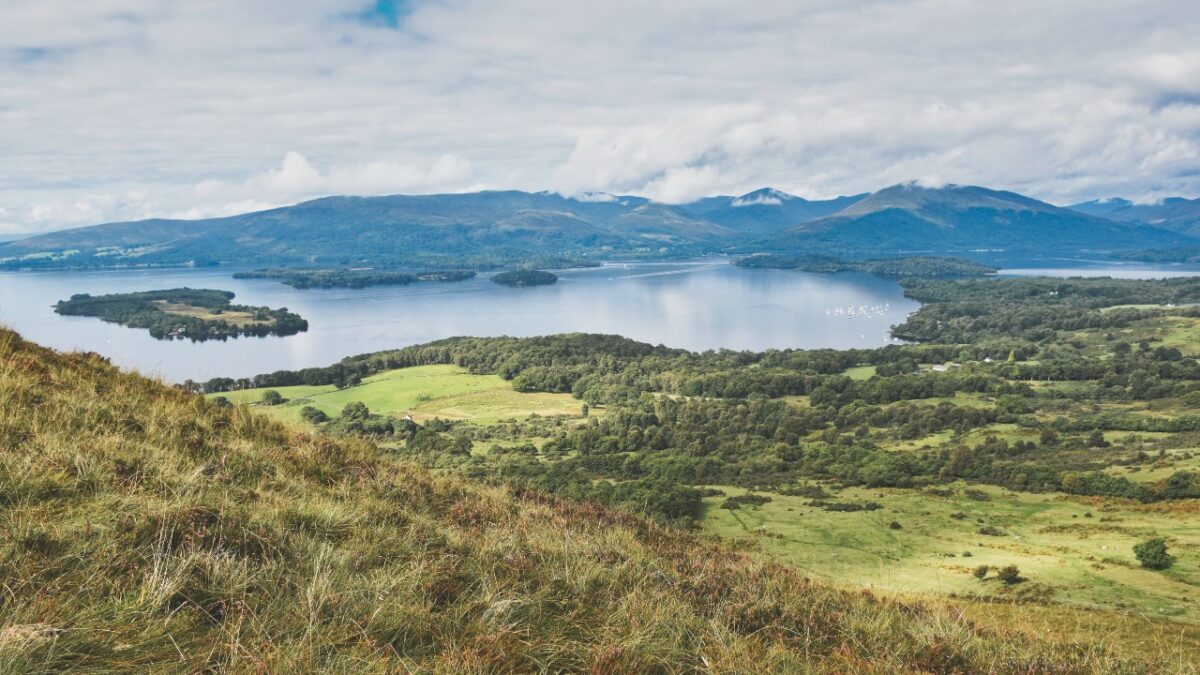
Due to the unpredictability of its weather, Scotland is widely considered as the land of extremes. In just one day, the temperature can go from damp and warm to blustery and chilly – so I encourage you to arrive at Loch Lomond well-prepared for the weather.
As far as I’m concerned, the best times of the year to visit this sublime area are spring and summer. There are long daylight hours and the weather is warm.
During these seasons, the views are amazing. You’ll be able to hike the majestic mountains, engage in unforgettable wildlife spotting, and enjoy taking stunning photos with a diversified color palette of flowers.
Those who come here in the month of August will also have a chance to experience the world-famous Highland Games. It’s the perfect time of year to visit Loch Lomond for all those who’d like to know more about Scotland’s culture and history.
If you’d rather visit Loch Lomond in the fall, you can expect autumnal yellow and red hues, as well as crisp air. During this season, one can easily spot red squirrels in the area too.
Coming here during the winter months can be a pleasant experience as well – it’s a nice time to warm up with a glass of mulled wine next to a pub fire. But don’t forget that you’ll have to deal with shorter daylight hours, very cold temperatures, and possibly heavy snowfall.
How Do I Get to Loch Lomond?
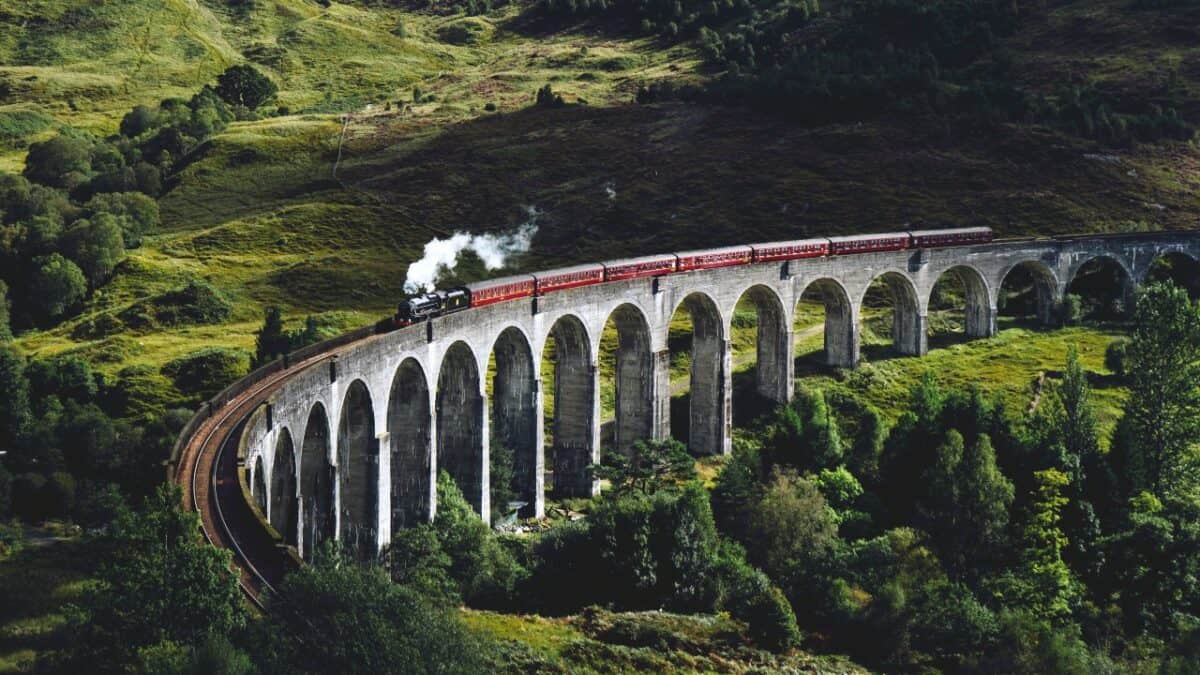
Here’s how to get to this magnificent Scottish loch by bus, train, and car:
By Bus
The buses that leave from Glasgow to Balloch (which is situated at the foot of Loch Lomond) are 1, 1E, and 1A. They depart from the Buchanan Bus Station roughly every 30 minutes.
By Train
By train, one can get to Balloch from Glasgow Queen Street in less than an hour. However, it takes close to two hours to get there from Edinburgh’s Waverley Station.
By Car
It takes about 45 minutes to get from Glasgow to Loch Lomond by car. You can get there by following the Great Western Road. Getting to Loch Lomond from Edinburgh by car takes an hour longer.
The Best Wild Camping Spots in Loch Lomond
It goes without saying that the best thing about wild camping is choosing your very own special place to camp for the night.
If you’re searching for some inspiration, on the other hand, you’ll be pleased to know that I’ve compiled a short list of my favorite wild camping spots in this gorgeous area. A word of caution, though – the midges can be really annoying here, so make sure to come with a midge-proof tent.
Also, if you’ve never been to Loch Lomond before and you’re completely unfamiliar with the area, be aware of the dangers such as peat bogs. It is always recommended to stick to the known paths while wild camping.
River Dochart, Crianlarich
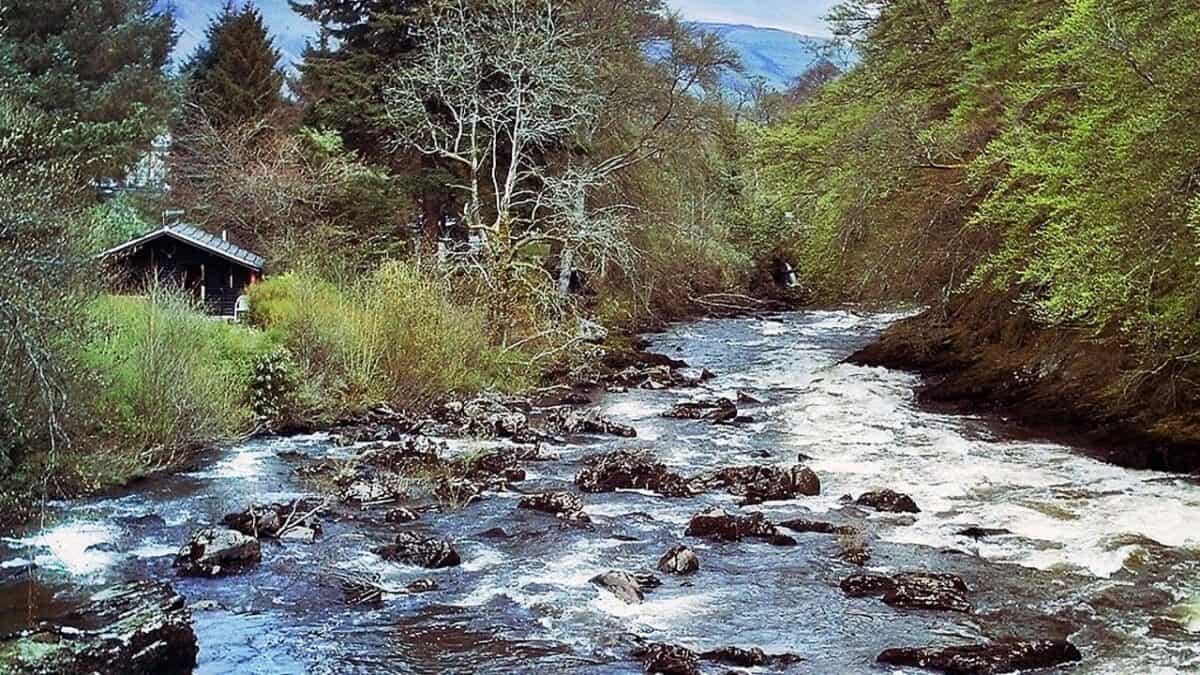
At River Dochart, you’ll be able to dive into the beauty of a genuinely relaxing wild camping experience.
However, it’s a great place for campers looking for some action, too – the river’s rapid waters allow water sports enthusiasts to test their skills. The lovers of history, on the other hand, can explore the 18th-century graves of clan chiefs that lie very close to the river.
But above all, River Dochart is a fantastic destination for all those who only want to enjoy the peacefulness of Scotland’s starry nights.
Strathcashell Point
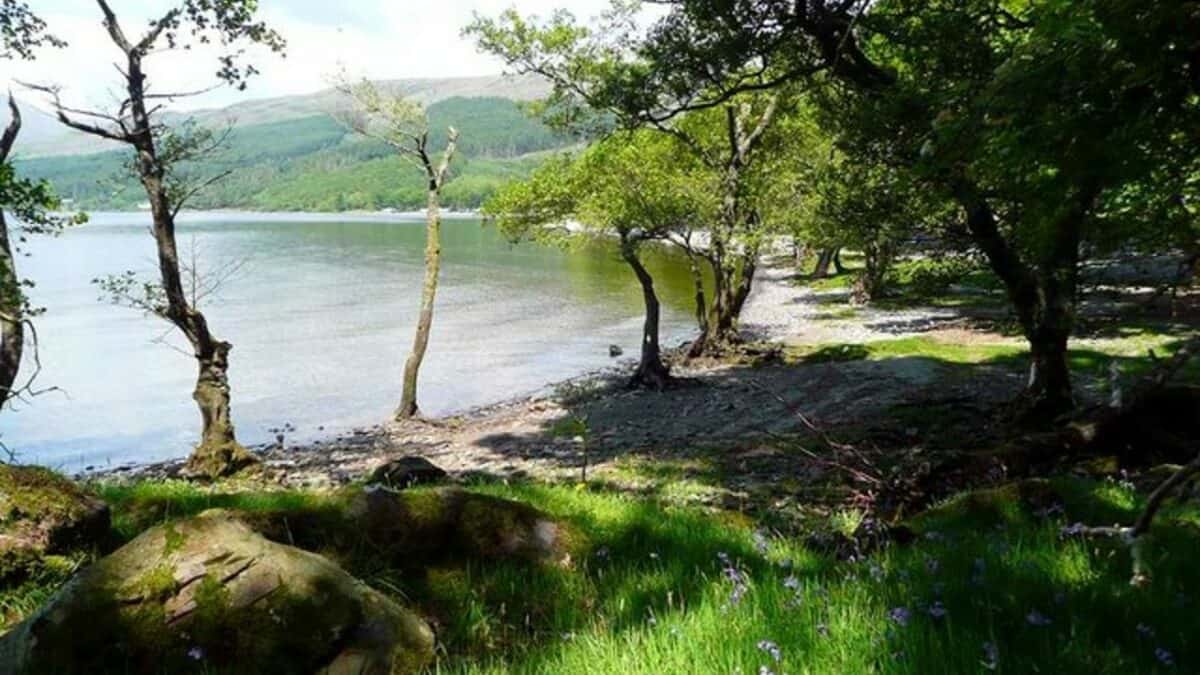
Just off the WHW (West Highland Way) is Strathcashell Point, a peaceful spot on Loch Lomond’s shoreline. It provides campers with breathtaking views of the lake and its wonderful islands. It’s one of the best wild camping spots in the UK.
One particularly great thing about this place is that it has a little beach. Here, you’ll be able to enjoy the aforementioned beautiful views while dipping your toes. And let’s not forget the morning swims!
Lochan Maoil Dhuinne
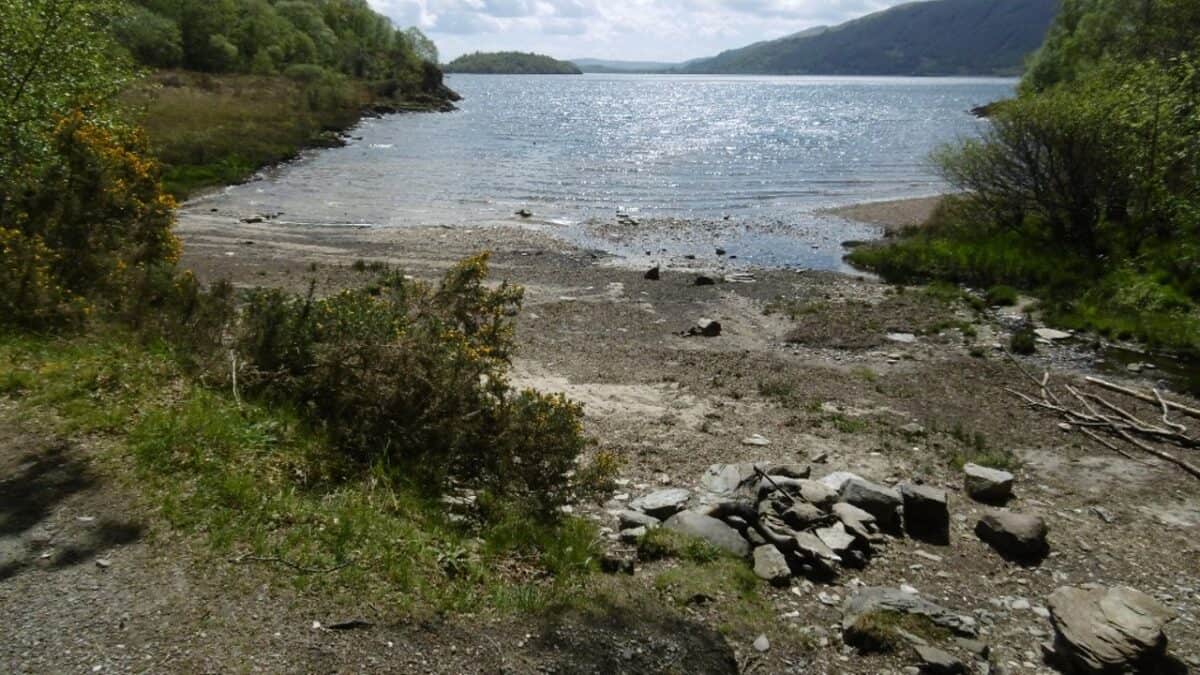
Lochan Maoil Dhuinne is, without a shadow of a doubt, one of the best wild camping places in this entire area.
Hidden away from Loch Lomond’s busy hotspots, it provides visitors with serene relaxation: right from the comfort of your tent, you’ll be able to hear the sounds of the birds high up on the area’s tall trees.
This is one of those locations at which you won’t be able to pitch up your tent without obtaining the aforementioned permit first.
Loch Drunkie
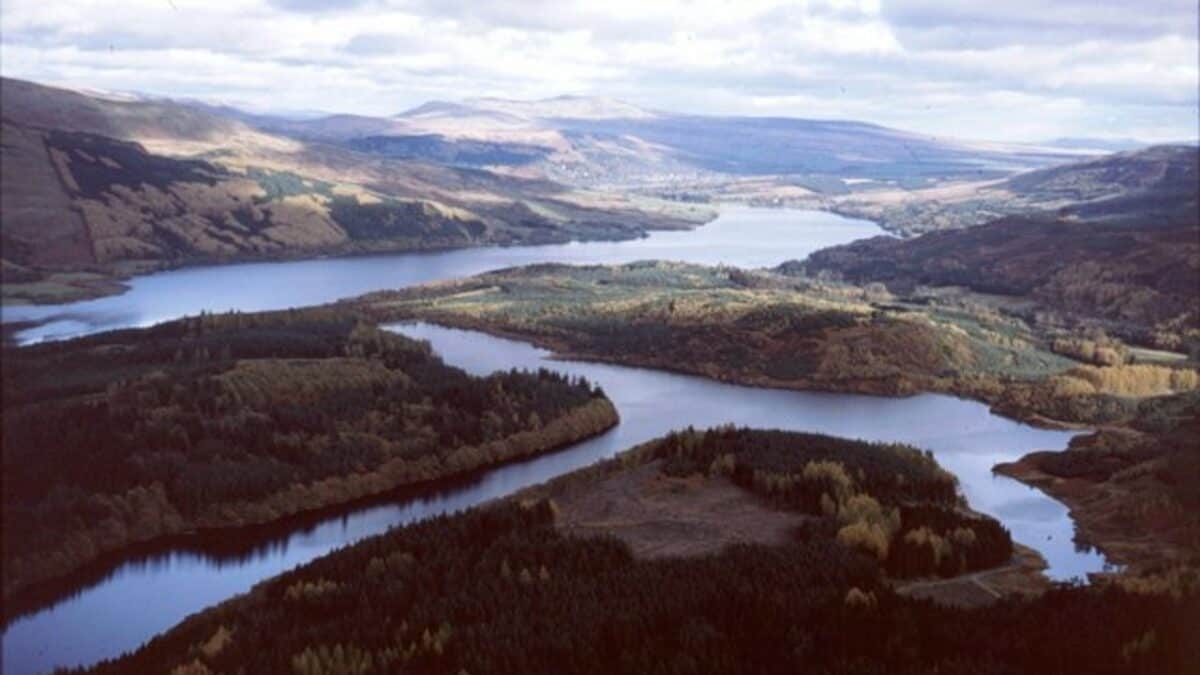
Behind this peculiar name hides one of the most charming wild camping spots in this region: it’s an exceptionally lovely-looking loch that’s surrounded by unforgettable scenery.
The best thing about this particular wild camping spot is the fact that it’s situated 127 meters above sea level. In other words, spectacular views of Scotland’s peaceful landscape are guaranteed.
Rowchoish
My fifth and final favorite wild camping spot in the Loch Lomond area is Rowchoish, which is situated on the lake’s northeastern shoreline. This place can be accessed only via the West Highland Way footpath.
Here, you will find a basic but practical hut in which you can spend the night for free. It is, however, often occupied by the WHW walkers, so make sure to get there early if you want to use it.
But if you’d rather just pitch your tent, you’ll be pleased to know that there are some superb wild camping spots about 1 mile south of the hut. They are great for stargazing and are very peaceful.
If your wanderlust still isn’t satiated after exploring Loch Lomond, or if the Rowchoish hut is taken, don’t fret. A stunning alternative awaits just a journey away, as wild camping at Loch Ness offers another serene and starlit escapade. This location is not just famed for its mythical resident, but also for the untamed beauty that makes camping there a truly wild adventure.
The Best Campsites in Loch Lomond
As I said above, choosing to balance wild camping with staying at developed campsites is a great way to support the local economy. Here are some of the best established campgrounds in Loch Lomond at which you can stay whenever you feel like taking a hot shower:
Beinglas Farm Campsite
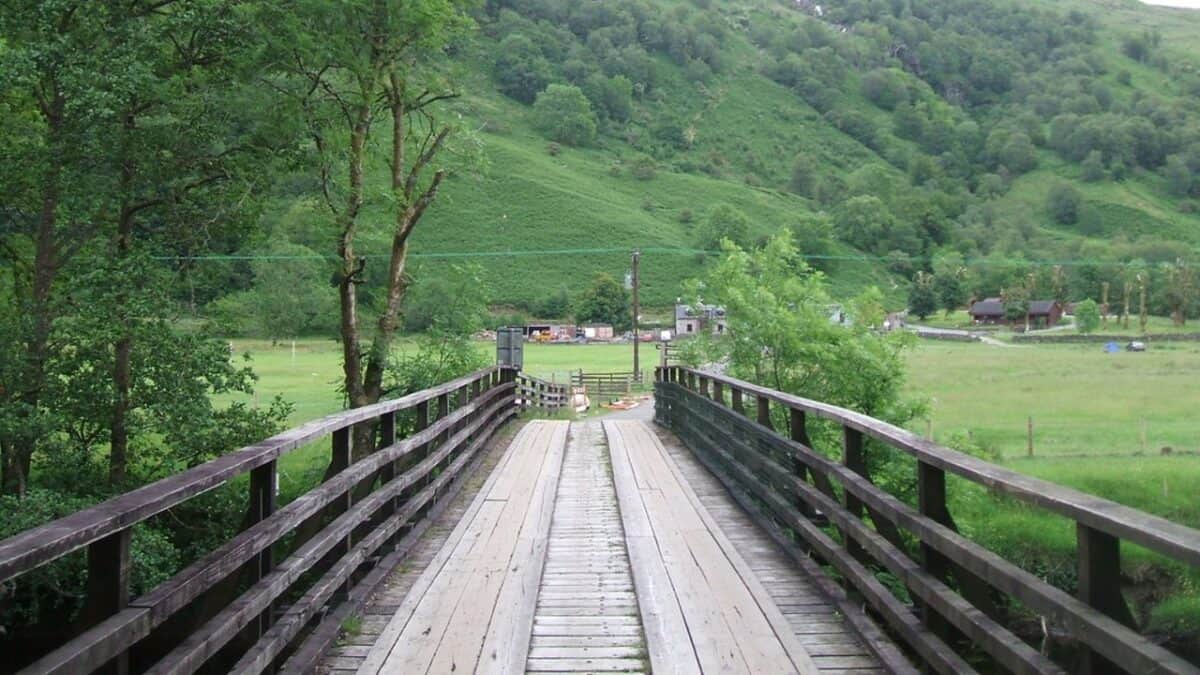
Beinglas Farm Campsite is very close to beautiful hills and gorgeous waterfalls, as well as to the main bus route.
Besides panoramic views of the region, it also offers a variety of accommodation options and good facilities. Moreover, it has a restaurant with a beer garden – always a big plus in my book.
Milarrochy Bay Campsite
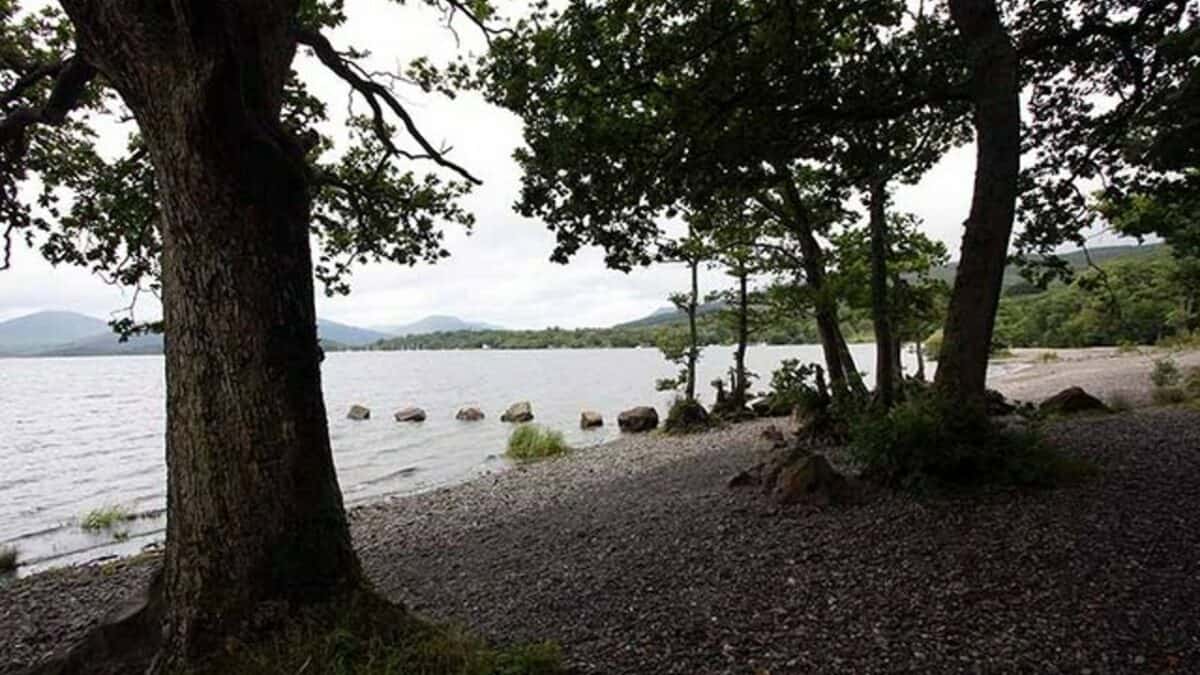
Located close to the West Highland Way footpath, on the eastern shore of Loch Lomond, Milarrochy Bay Campsite is the perfect destination for all those planning to hike up Ben Lomond.
When it comes to the amenities, Milarrochy Bay Campsite provides its visitors with free Wi-Fi and electric hookups. There is also a small shop and a water bus.
Luss Campsite
Situated on the opposite side of the lake – on the western shore of Loch Lomond – Luss Campsite has easy access to the Tarbet to Balloch cycle and walking route.
It is about 15 minutes of walking away from the medieval village of Luss and provides campers with electric hookups, a children’s play area, and a shop at the reception. It is also dog-friendly.
Cashel Campsite
Tucked away on the lake’s eastern side, Cashel Campsite provides its visitors with truly captivating Scottish scenery: it is surrounded by Queen Elizabeth Forest Park and offers stunning mountain views. It’s a perfect place for reconnecting with nature.
It’s a clean and modern campground with all the necessary facilities – washrooms, showers, and toilets – and one that also has a small on-site shop and a restaurant. It is situated right next to the West Highland Way footpath.
For more great camping in Scotland, read our guide to camping in Mallaig and our guide to wild camping on Isle of Mull as well.
FAQs
Can you camp on the islands on Loch Lomond?
Wild camping is allowed on most of the islands of Loch Lomond. The Inchcailloch islet is a popular campsite for wild campers and can be accessed by boat from Luss or Balmaha. However, parking is not available and the facilities on the island are basic.
Can you park overnight at Loch Lomond?
It’s possible to find a place to park overnight at Loch Lomond, but overnight parking is restricted in some places. At some campsites, you may need to book parking in advance. Some campsites allow free parking while others charge between £3 and £5 per night.
The Takeaway
So, there it is – my complete guide to wild camping around one of Scotland’s most astonishing lakes – Loch Lomond.
Hopefully, this article will help you properly prepare yourself for a wild camping adventure in this region and experience its beauty in the best way possible. Good luck!

I love hiking, backpacking, and camping. From the Camino de Santiago to the West Highland Way in Scotland or simply a great day hike on the weekend. Hiking refreshes me, my mind, and keeps my body reasonably fit. So far I have walked three Camino routes and many other long distance hikes in the UK, Canada, and around the rest of Europe. One of the best was my hike up Ben Nevis.

